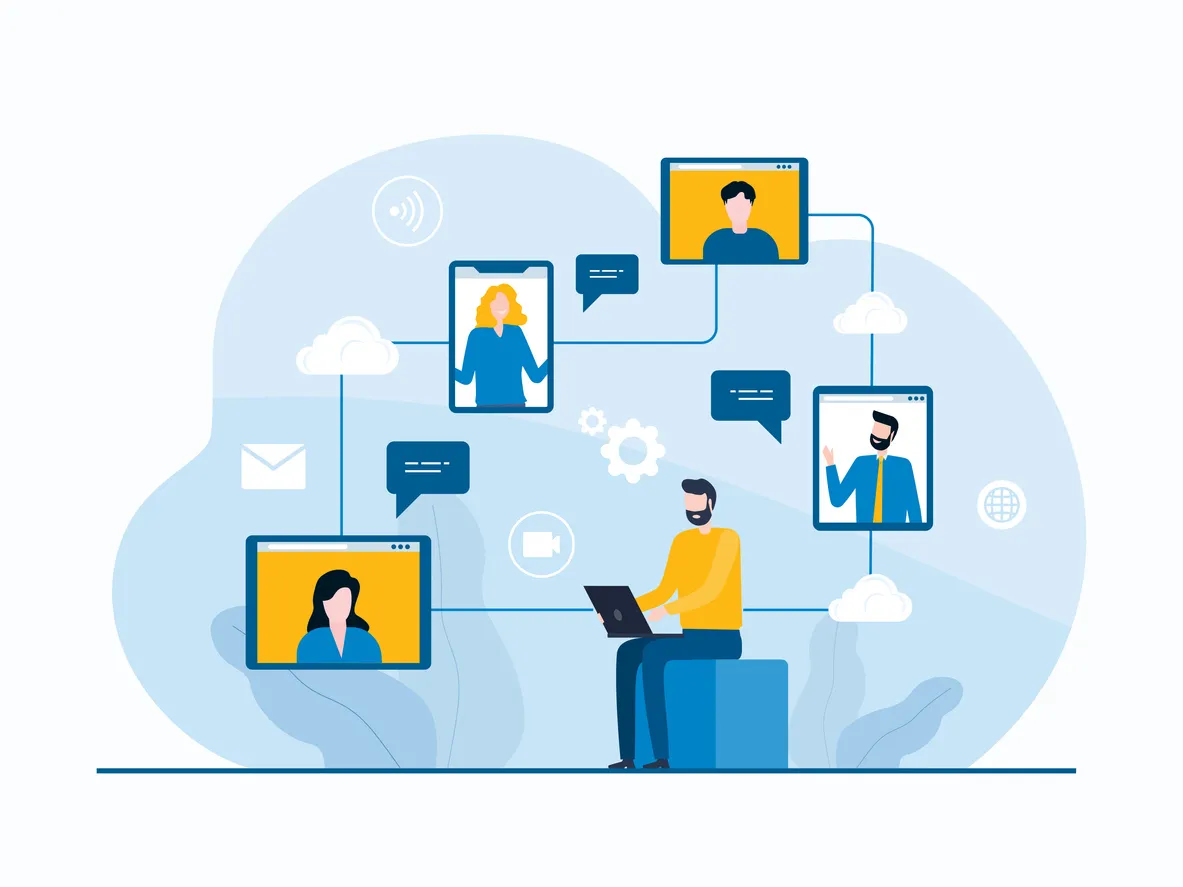Having the right technology can be critical to a registered investment advisor’s success. However, knowing what to include in an RIA tech stack may take some thought and planning to ensure you have the right tools to meet your needs. This guide offers some helpful suggestions on what to include, along with tips for building out a tech stack from scratch.
If you’re looking to scale, add new clients and AUM at your desired pace with SmartAsset’s Advisor Marketing Platform. Sign up for a free demo today.
What Is an RIA Tech Stack?
An RIA technology stack refers to all the tools that are necessary to run an RIA firm. That can include software and services for managing the front, middle and back ends of your business.
Why do RIAs need a tech stack? Having the right technology is important for growing your business and ensuring everything runs smoothly daily. Investing in tech tools can help you potentially:
- Streamline operations, saving you time and money
- Improve the client experience, leading to increased loyalty and retention rates
- Generate more referrals for your business from satisfied clients
- Better meet compliance guidelines and protect client information
Adopting new technology can also help your firm stay competitive with RIAs that actively embrace innovation. For example, more wealth management firms are exploring the possibilities of using AI to scale. Failure to adapt to changing technologies could mean getting left behind.

Client Acquisition Simplified: For RIAs
- Ideal for RIAs looking to scale.
- Validated referrals to help build your pipeline efficiently.
- Save time + optimize your close rate with high-touch, pre-built campaigns.

CFP®, CEO
Joe Anderson
Pure Financial Advisors
We have seen a remarkable return on investment and comparatively low client acquisition costs even as we’ve multiplied our spend over the years.
Pure Financial Advisors reports $1B in new AUM from SmartAsset investor referrals.
What to Include in an RIA Tech Stack

What your tech stack looks like can depend largely on the needs of your firm. Identifying your business’s pain points can help you determine which solutions might be appropriate. Generally speaking, an RIA tech stack may include any of the following tools.
1. Customer Relationship Management (CRM) Tools
Customer relationship management software can help RIAs simplify collecting and organizing client data, making their lives easier.
A good CRM program should allow you to set up automated workflows for tasks like onboarding and off-boarding, email marketing and lead generation. The ability to share data and files is another good feature to have if you’d like to be able to make client information accessible to other members of your firm.
2. Financial Planning Software
As an advisor, you spend a significant amount of time offering financial advice to your clients. Financial planning software can help you create customized plans more efficiently. Some of the features to look for when choosing a financial planning software may include:
- Client-led planning tools
- Integrations with other RIA tech tools
- Interactive simulators and calculators
- Detailed analytics reporting
- Customizable planning templates
- Access to a secure client planning portal or dashboard
- Superior customer service and support
Consider choosing a program that can help you create charts or graphs. These visual aids will be useful for showing your clients their net worth, financial goals and projected investment outcomes. Visualizer tools can help to underscore the impact of doing A, B or C when making decisions.
3. Portfolio Management Software
Portfolio management software acts as a complement to financial planning tools in an RIA tech stack. In terms of what kind of capabilities you should be looking for here, that can include things like rebalancing, trading, tax management, as well as legacy or estate planning. You may also be interested in software that incorporates tools for risk management, data aggregation and/or lead generation.
If you’d like to separate some of those functions and you have the budget to do so, you might consider separate tools for trading and rebalancing, or a different software program that handles risk analysis. Of course, a more centralized approach could mean less jumping back and forth between tools or programs to manage client portfolios.
4. Virtual Conferencing and Note-Taking Tools
RIAs are increasingly taking client meetings and team meetings online. While in-person meetings aren’t likely to disappear any time soon, having the option to meet via video conferencing is worth considering. Virtual meetings can save you and your clients time, and it can also be a more convenient option if you have clients who are busy and can’t make it to your office regularly.
Note-taking tools can help you document client meetings in detail, without taking the focus off the conversation at hand. AI note-takers can record meetings from start to finish, summarize meeting notes and generate content to include in follow-up emails once the meeting concludes.
5. Compliance and Cybersecurity Software
Compliance is something RIAs must take seriously, as failing to meet regulatory guidelines could leave your firm open to penalties. Likewise, protecting client information is equally important, particularly given the uptick in cyberattacks and fraud.
RIA compliance software programs can help you to identify areas where your firm may be lacking and address potential security concerns. Capabilities can extend to:
- RIA registration with the SEC or state regulatory agencies
- Employee compliance
- Cybersecurity
- Archiving and information management
- Audit preparation
Having this type of software is no substitute for hiring a compliance officer, which is something that’s required under SEC registration rules. Investing in compliance and cybersecurity software can help to ensure that nothing falls through the cracks due to oversight.
6. AI Agents
AI agents interact with clients on your behalf, freeing up more time in your schedule. For example, an AI agent can answer basic client questions, assist clients or prospects with online navigation for your website or client portal, or analyze marketing campaigns to increase their efficiency and success rates. These tech tools use predictive analysis to anticipate user needs and provide solutions.
7. Marketing and Lead Generation Tools
Marketing and lead generation are core activities for any advisor who wants to scale successfully, and your RIA tech stack may be incomplete without tools dedicated to these activities.
For example, AI lead gen tools are becoming an increasingly popular choice for advisors who want to connect with high-intent leads, without taking time away from their existing clients. The way these tools function varies; some deliver a set number of leads to your inbox, while others equip you with AI-generated marketing content that you can use to contact prospects. However, they all typically rely on deep data analysis to help you better target your marketing efforts.
SmartAsset AMP (Advisor Marketing Platform) is another option to consider if you’re looking for a way to automate lead generation. SmartAsset AMP uses a holistic approach to help growth-focused RIAs connect with qualified leads who are ready to work with a financial professional. From building your pipeline to verifying referrals, SmartAsset AMP can help you optimize your marketing efforts and lead generation efforts.
8. Billing Software
Of course, you want to get paid for the services you render to your clients. Billing software can simplify your invoicing and accounting processes to ensure that you’re billing clients appropriately, and collecting payments in a timely manner.
Look for billing tools that are tailored to the type of advisory business you operate. For example, if you’re a fee-based planner, your needs may be very different from a fee-only advisor. Also, consider what size firms typically use a particular billing software tool. Some programs may be better suited to smaller boutique firms, versus larger enterprises.
Doing a technology audit can help you identify what systems you already have in place for simplifying tasks and what’s working (or not). If you don’t have a chief technology officer, you might consider hiring one. At the very least, think about consulting with an RIA tech professional who can offer insight into which tools might be most useful and necessary to have.
As you compare options, ask yourself what you need a particular tool to do for you. Specifically, what problems should it help you to solve? Once you’ve clarified that, consider how easily the tool will integrate into your tech stack, the potential learning curve involved to adapt to it, and the cost.
Build a Better RIA
Drive growth with automation, not headcount using the all-in-one advisor marketing platform.

Bottom Line

Building an RIA tech stack can take time but it’s worth the effort if you’re ready to embrace the possibilities that tech has to offer. With the right technology in hand, you can operate your firm more efficiently and better serve your client’s needs, both of which can help you to scale and grow over the long term.
Tips for Growing Your Advisory Business
- Consider investing in systems that help you generate leads and convert prospects into clients. SmartAsset AMP (Advisor Marketing Platform) is a holistic marketing service financial advisors can use for client lead generation and automated marketing. Sign up for a free demo to explore how SmartAsset AMP can help you expand your practice’s marketing operation. Get started today.
- Scheduling tools and AI tools can help to streamline your marketing efforts online. For instance, you might use ChatGPT or similar AI technology to generate social media content or email newsletters. And scheduling tools can make it easier to feed your social media followers a steady diet of content, without having to be perpetually online.
Photo credit: ©iStock.com/gorodenkoff, ©iStock.com/shapecharge, ©iStock.com/Courtney Hale
